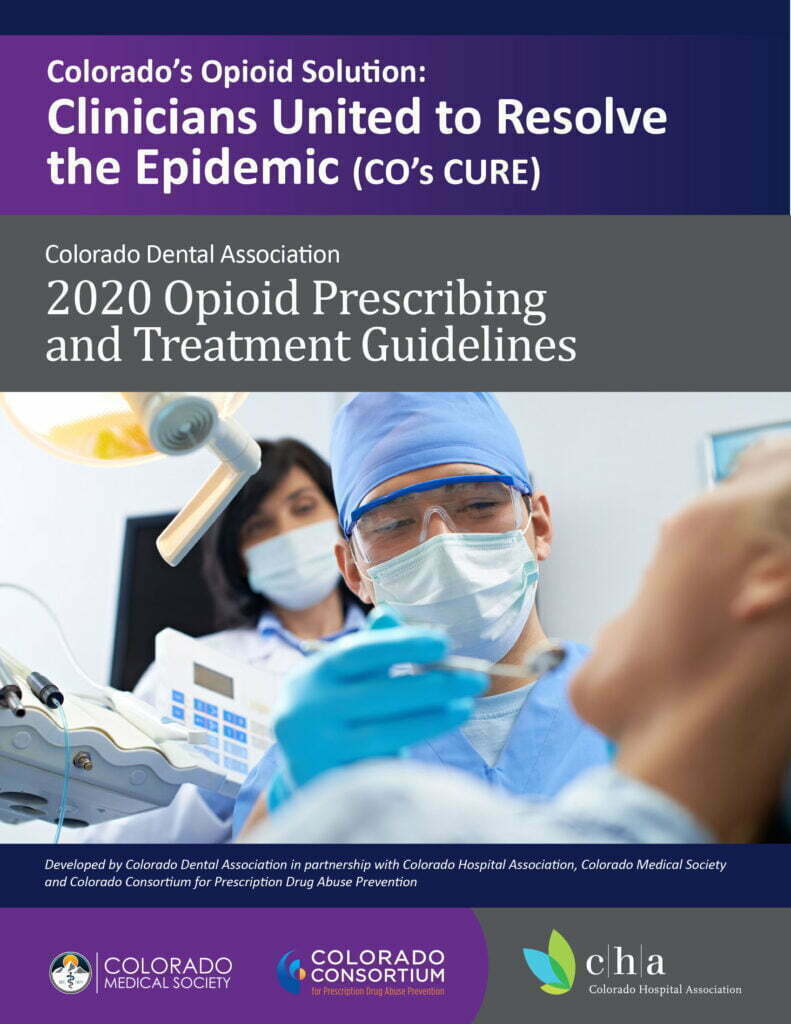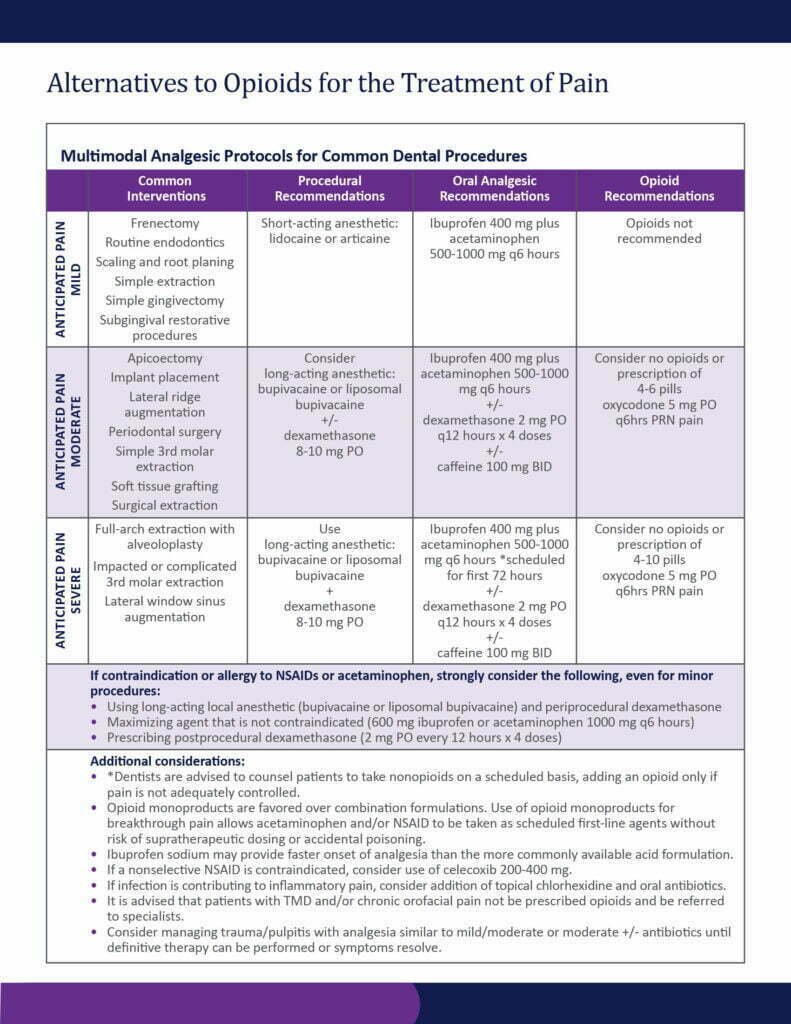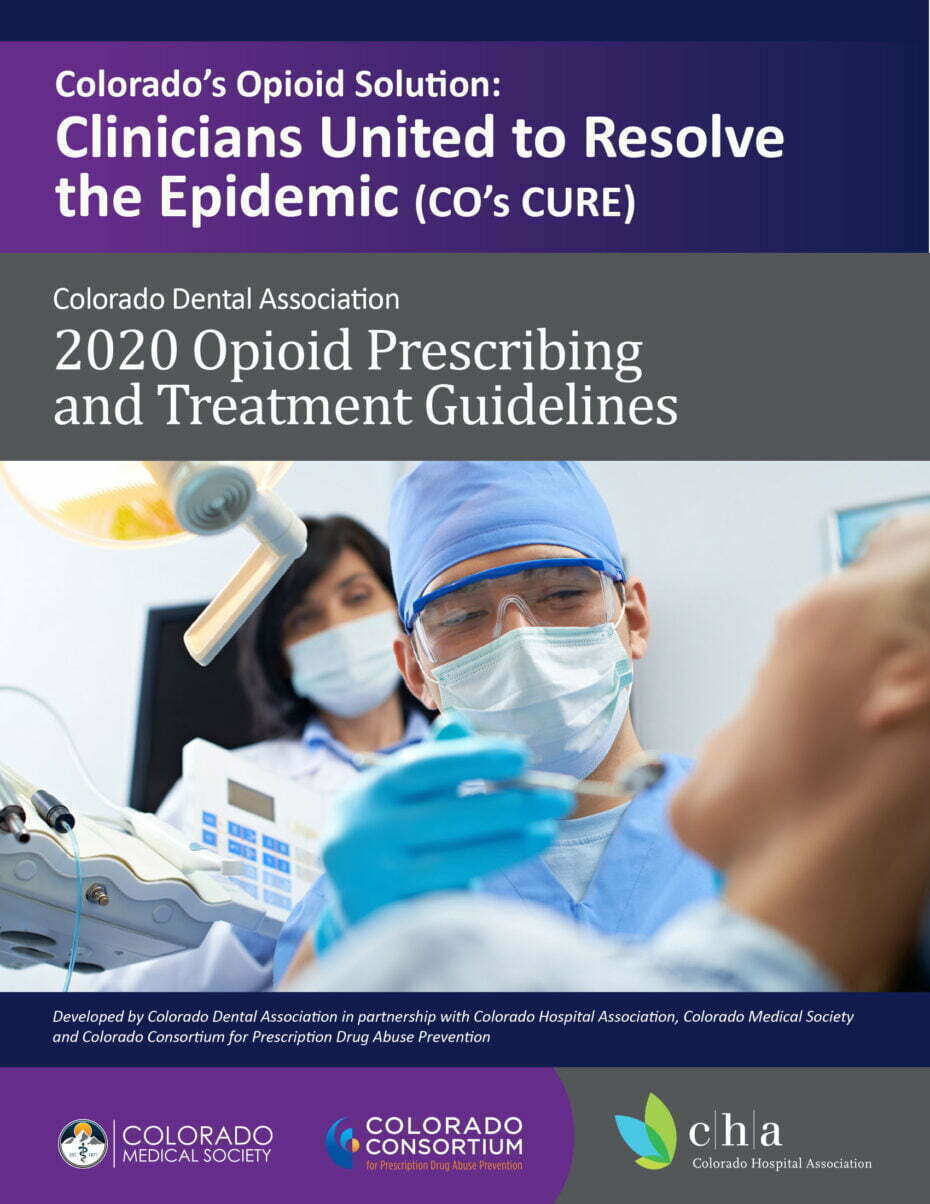By Susan Somerset, D.M.D., Pharm.D.
From the Spring 2021 Journal of the Colorado Dental Association
 In January 2016, the Colorado Hospital Association (CHA) surveyed several health systems across Colorado to better understand the interventions being used to address the state’s opioid epidemic. This survey identified that, for the majority of organizations, opioid safety was an active area of interest. Based on these results, CHA partnered with multiple organizations to form the Colorado Opioid Safety Collaborative to improve opioid safety in Colorado emergency departments.
In January 2016, the Colorado Hospital Association (CHA) surveyed several health systems across Colorado to better understand the interventions being used to address the state’s opioid epidemic. This survey identified that, for the majority of organizations, opioid safety was an active area of interest. Based on these results, CHA partnered with multiple organizations to form the Colorado Opioid Safety Collaborative to improve opioid safety in Colorado emergency departments.
This led to the Colorado Opioid Safety Pilot being conducted in 10 Colorado hospital emergency departments. This pilot study evaluated whether altering pain management strategies would result in a 15% reduction in opioid use and an increase in the use of non-opioid therapies without a reduction in patient satisfaction. The treatment guidelines used were developed by the Colorado chapter of the American College of Emergency Physicians.
The results of the six-month pilot were a 36% reduction in opioid usage and a 31.4% increase in the use of alternatives to opioid (ALTO) medications without significant changes to patient satisfaction scores. There was a small but significant improvement in pain scores. Based upon the success of the pilot study, “Clinicians United to Resolve the Epidemic” (CO’s CURE) collaborated with six clinical specialties, committed to resolving the opioid epidemic in Colorado through the development of evidence-based opioid prescribing guidelines customized to each specialty. The use of these guidelines centers around four key strategic areas: limiting opioid use, using ALTOs for the treatment of pain, implementing harm reduction strategies, and improving the treatment and referral of patients with Opioid Use Disorder.
This project resulted in the development of the nation’s first comprehensive multispecialty guidelines. The guidelines are tailored for emergency medicine, surgery and anesthesia, dental, pharmacy, occupational and environmental medicine, and hospital medicine. These guidelines are not intended to replace the clinician’s professional judgement, but to serve as an additional resource for the healthcare professional.
Dentistry’s Involvement
|
The full CO’s CURE Dental Guidelines may be accessed at cdaonline.org/cocure. Thank you to the dentist editors of this “2020 Opioid Prescribing and Treatment Guidelines” document: Kenneth Peters, D.D.S., chair |
The CDA brought together a diverse group of dental clinicians representing various dental specialties (academia, oral surgery, endodontics, periodontics and general practice) to evaluate and develop a set of pain management guidelines to provide dental professionals with additional tools and resources in collaboration with CO’s CURE. Prescribing guidelines from multiple state dental and specialty associations, pain management research, and prescribing recommendations were evaluated and compared to common practices. Review included consideration of some medications or therapies that are not currently used routinely in dentistry but have shown favorable results in other medical specialties to treat pain.
This review resulted in the development of prescribing guidelines for the dental professional. Highlights include:
- Establish reasonable expectations with patients with respect to pain management. Have an agreed upon plan to manage a patient’s pain.
- When possible, employ a pre-procedural, non-opioid pain medication, which can be taken at home or in-office as appropriate.
- Consider using an anesthetic agent with a longer duration of action.
- Use a multimodal approach when prescribing a post procedural pain management regimen. Using multiple medications with differing mechanisms of action has been shown to be more effective than a single therapeutic agent.
- Guide patients in appropriately scheduling post procedural pain management regimens. Instruct the patient to begin the pain management regimen prior to the anesthetic agent wearing off.
 There is a chart available with various non-opioid pain management regimens that can be easily referenced or posted in your office. This is not intended to replace clinical judgement but provide additional options for the dental provider—aiming to decrease patient risk associated with the use of opioids when possible. The chart also provides alternative therapeutic regimens for patients with contraindications to conventional treatment recommendations. The goal of this effort was to provide a practical, easy-to-use reference for the dental professional who provides some clinically supported alternatives to use of opioids for dental pain management.
There is a chart available with various non-opioid pain management regimens that can be easily referenced or posted in your office. This is not intended to replace clinical judgement but provide additional options for the dental provider—aiming to decrease patient risk associated with the use of opioids when possible. The chart also provides alternative therapeutic regimens for patients with contraindications to conventional treatment recommendations. The goal of this effort was to provide a practical, easy-to-use reference for the dental professional who provides some clinically supported alternatives to use of opioids for dental pain management.
References:
- Colorado Hospital Association. The CO’s CURE Initiative. Published 2021. Accessed March 8, 2021. https://cha.com/opioid-safety/cos-cure/
- Stader D, Wald H, Mackay DR, et al. Alternatives to opioids protocols in Colorado emergency departments reduce opioid use without changing reported pain. JACEP. Dec 2020; 1(6) pages 1493-1499.
- CHA Releases CO’s CURE Opioid Prescribing Guidelines, (2021) Western Slope Now. https://www.westernslopenow.com/colorado-news/cha-releases-cos-cure-opioid-prescribing-guidelines/
Susan Somerset, D.M.D., Pharm.D., is a general dentist and a pharmacist. She serves on the CDA Government Relations Council and is an Action Team Leader for ADPAC.


